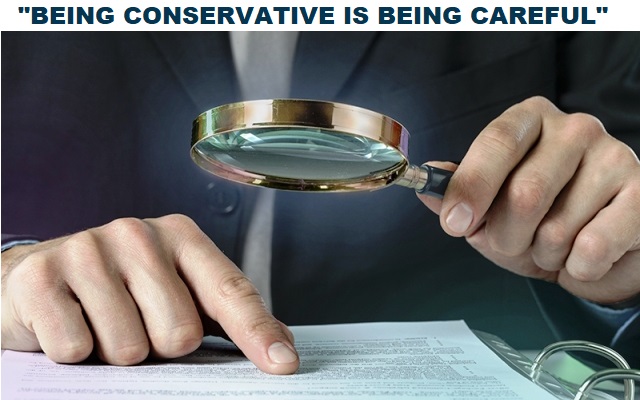Conservatism principle of accounting
Introduction to the concept
Generally accepted accounting principles (GAAPs) are laid down across accounting areas to ensure an accurate and consistent recording of financial transactions. Among these, one important and basic principle is the conservatism principle (also referred to as the prudence concept of accounting). This principle states that business entities must record all likely expenses and liabilities, whereas revenues and assets should only be recorded when there is a certainty that they will materialize.
The conservatism principle lays down recognition rules for commercial entities, specifically in cases where there is uncertainty about the occurrence of a financial event or the amount involved. It works as a guideline for accountants who have to continue using their own judgment and discretion while recording transactions in the event of uncertain events. The concept is followed in all accounting frameworks and jurisdictions to ensure that financial statements derived from entities’ accounting systems present a fair and consistent view of their business and financial performance.

Examples of conservatism concept
Example 1
One of the most relevant examples of the conservatism principle is in the case of impending legal suits. Let’s say ABC Inc. is a software company that has filed a suit against XYZ Inc. for using its patent technology. ABC has claimed damages of $500,000 for patent infringement. The case is ongoing in a court of law.
Although ABC Inc. may have a strong case in its favor, under the principle of conservatism, it will not record this amount as a gain in its books until it actually materializes with a favorable ruling. The reason is that recording a sizeable gain before it is actually received (or becomes receivable through the court decision) may be misleading for users of the company’s financial statements.
Let’s take the above illustration in reverse. If a competitor files a case against ABC Inc. for patent infringement, the reporting may be different. Since it can be a likely loss, the company will definitely report it as a contingent liability in the footnotes to its financial statements. In fact, depending on the specific facts, if it is likely that the company will actually lose the case and have to incur a heavy payout, it will actually make a provision for the same in the books.
This falls once again under the conservatism principle. Any likely expense or loss must be recorded or provided for so that users have a true and fair view of the entity’s financial condition.
Example 2
Kim Company has outstanding debtors amounting to $50,000. It gets information that one of its debtors owing $10,000 has filed for bankruptcy and is unlikely to repay the dues. Under the conservatism principle, the company ought to provide for the entire $10,000 due from the debtor, as there is a likelihood that he will default on the payment.
Why is the conservatism principle important?
Apart from the fact that it is a part of GAAP, the conservatism principle has a very sound rationale as well. The principle ensures that profits are not overestimated by companies and their accountants. It necessitates that accountants exercise abundant caution and prudence while accounting for business transactions.
The stakeholders who rely on financial statements for various purposes range from investors to creditors, bankers, lenders, etc. If profit is overestimated due to overestimation of revenues and incomes or underestimation of losses and expenses, the accounting statements can be misleading for stakeholders and other users. When accountants are conservative with respect to recording liabilities and recognizing assets, financial statements can be fair, trustworthy, and appropriate for decision-making.

Leave a comment